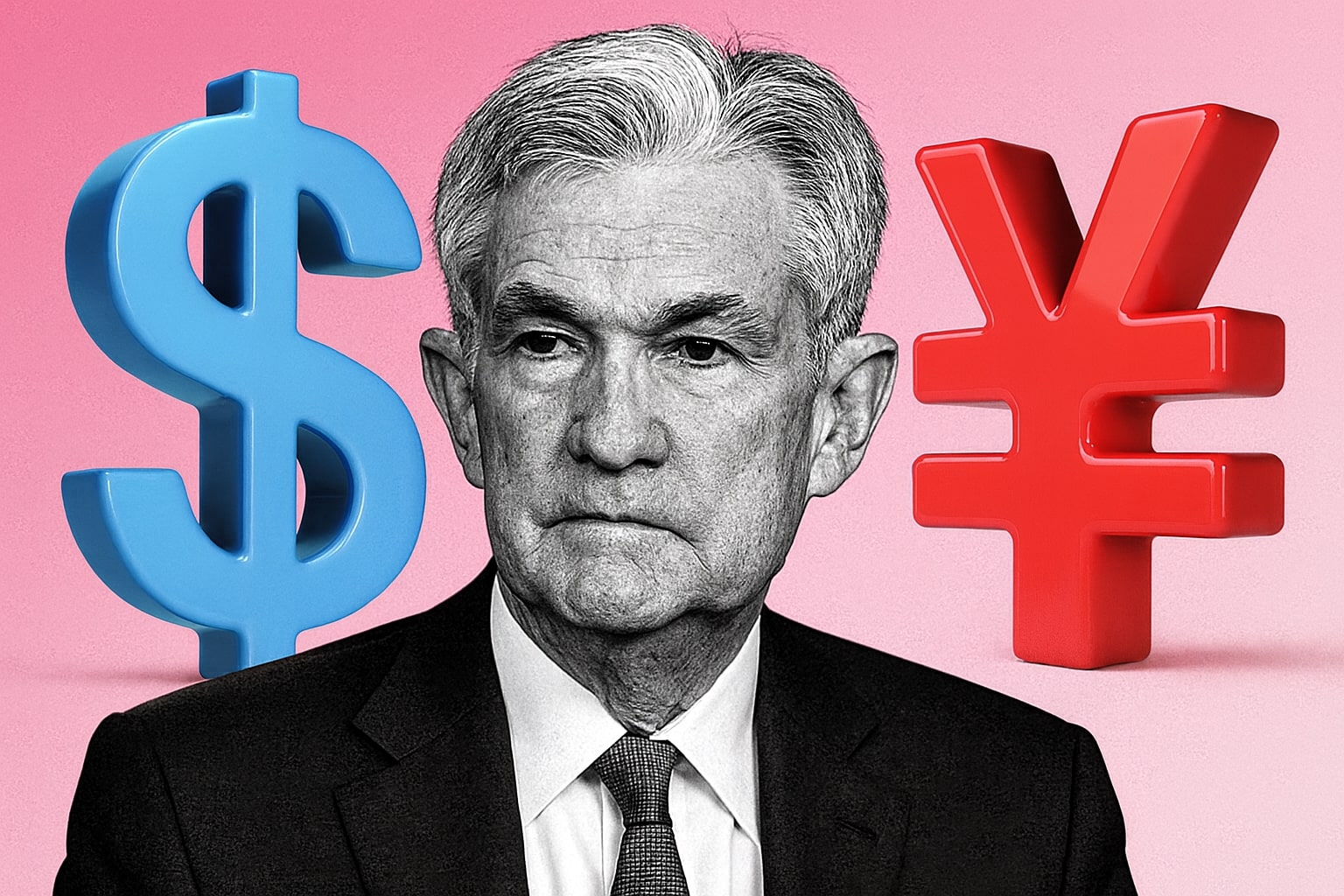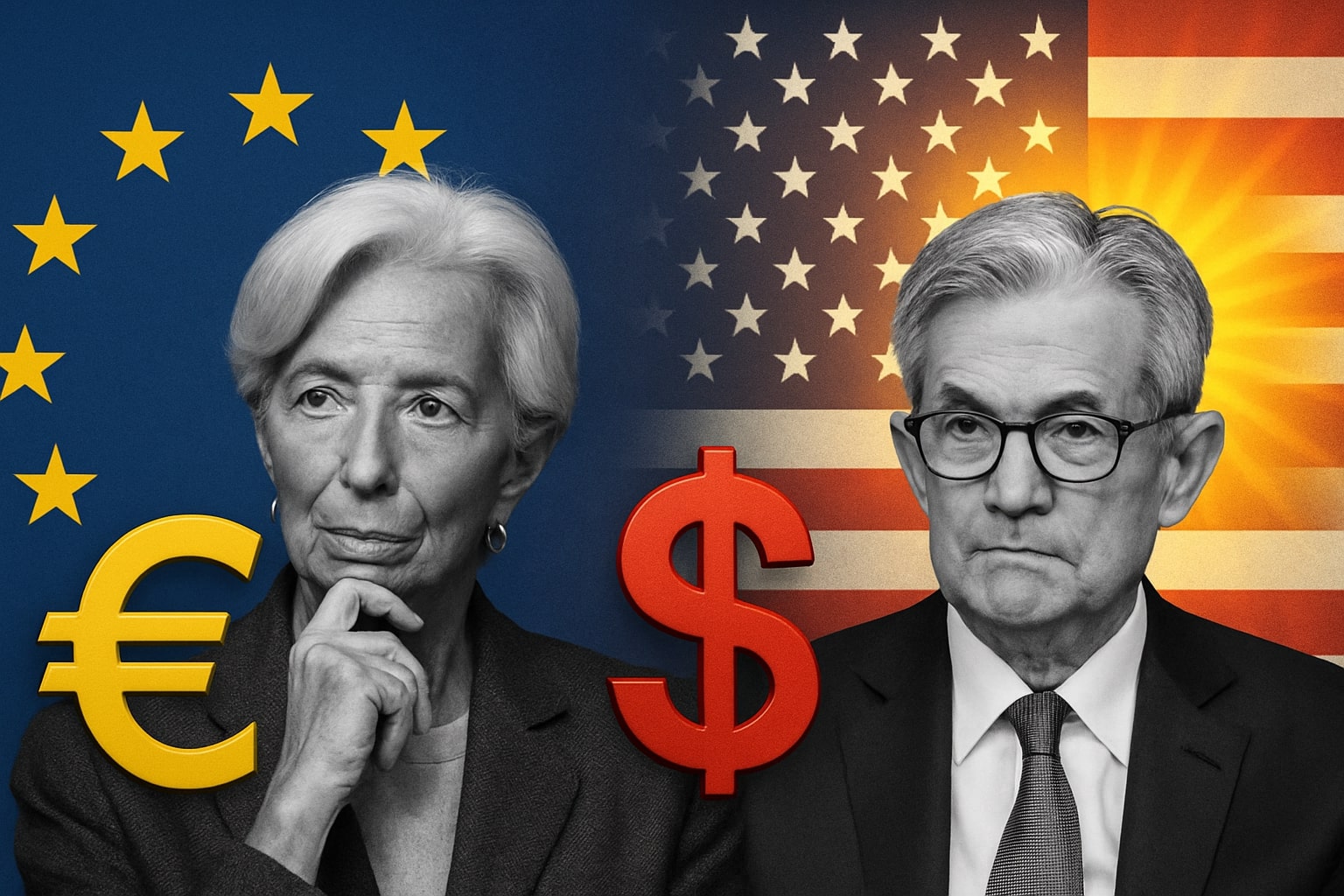
EUR/USD Price Forecast: Euro Struggles at 1.1637 With Fed and NFP Risks
Dollar strength, Eurozone inflation, and France’s political crisis push EUR/USD toward 1.1550 support while markets await US payrolls | That's TradingNEWS
EUR/USD Slides as Dollar Strengthens on Rising Yields and Fed Cut Bets
The EUR/USD exchange rate has slipped toward 1.1637, under heavy pressure as investors piled into the U.S. dollar. The move followed a surge in U.K. 30-year bond yields to 5.68%, their highest since 1998, which rattled European sentiment and triggered safe-haven flows into gold and the dollar. The euro’s weakness was compounded by the latest Eurozone inflation data, where the HICP rose 2.1% year-over-year in August with core inflation steady at 2.3%, both above expectations. While higher inflation might typically strengthen the euro by delaying European Central Bank (ECB) easing, global risk aversion and expectations of Fed action kept dollar demand elevated.
Impact of U.S. Data and Fed Policy on EUR/USD
The U.S. economy’s PMI figures remain critical for near-term EUR/USD moves. The ISM Manufacturing PMI is projected to edge up to 49 in August after printing at 48 in July, while the final S&P Global PMI is expected to confirm 53.3. Weakness in labor data could amplify bets for a more aggressive Federal Reserve rate cut on September 17, where markets already price a 90% probability of a 25 bps cut and even chatter of a 50 bps move. The nonfarm payrolls report later this week will be decisive, with estimates of a modest 75,000 job gain and 4.3% unemployment. A downside surprise would reinforce euro gains, but robust figures could extend dollar strength and push EUR/USD closer to support levels.
European Political and Economic Tensions Keep Euro Fragile
Political instability in Europe is weighing further on the euro. France faces a September 8 confidence vote that could topple the Bayrou government, renewing concerns over debt sustainability. This follows unrest earlier in the year when collapsing governments sparked short-term euro weakness before recovery. The broader economic backdrop remains fragile, with German 30-year bond yields hitting 14-year highs and French yields climbing to 16-year peaks, highlighting investor unease with fiscal outlooks. Despite this, Eurozone manufacturing activity posted its first expansion in three years, giving some cushion to the euro. Yet, ongoing trade tensions after a U.S. federal appeals court deemed Trump’s tariffs illegal add layers of uncertainty, leaving the euro vulnerable to dollar momentum.
Technical Structure and Key Levels for EUR/USD
Technically, EUR/USD hovers at a fragile point between resistance near 1.1700–1.1740 and support at 1.1600–1.1550. The pair slipped after failing to hold above 1.1706, with momentum indicators turning bearish. The 50-EMA at 1.1668 and 200-EMA at 1.1641 now act as pivot levels. A sustained close below 1.1640 could open downside toward 1.1580 and 1.1521, with the 100 SMA near 1.1510 reinforcing support. On the upside, reclaiming 1.1735, the 78.6% Fibonacci retracement of July’s decline, would unlock 1.1788 before retesting the 2025 high of 1.1830. Until then, the technical ceiling suggests near-term consolidation with a bearish tilt.
Market Sentiment, Seasonality, and Historical Trends
Sentiment indicators show traders are cautious. Social media mentions of “buy the dip” have risen, but analysts warn a true bottom forms when fear dominates, not optimism. Historically, September has been the worst-performing month for EUR/USD, with the pair losing on average 3.5% since 2013 between the 16th and 23rd of the month. This seasonality compounds the current bearish outlook. The euro’s short-term strength is therefore heavily reliant on U.S. labor softness and Fed cuts, while structural challenges in Europe—from political fragility to debt concerns—keep pressure intact.
Verdict: Hold with Downside Risk
With EUR/USD trading near 1.1637, the risk balance remains tilted lower toward 1.1550–1.1510, unless payrolls data forces a decisive dovish Fed shift. While there is scope for rebounds to 1.1735–1.1830 if U.S. data disappoints, the technical ceiling and seasonal weakness warn against aggressive bullish positioning. The euro remains capped by European political stress and U.S. dollar demand as safe-haven flows intensify.
That's TradingNEWS
Read More
-
SCHD ETF Price at $27: Can SCHD’s 4% Yield and 9.15% Dividend Growth Beat High-Yield Covered Call ETFs?
15.12.2025 · TradingNEWS ArchiveStocks
-
XRP ETFs Close on $1B Inflows as XRPI at $10.92 and XRPR at $15.52 Hit 52-Week Lows
15.12.2025 · TradingNEWS ArchiveCrypto
-
Natural Gas Price Forecast: NG=F Holds the $4 Floor as Oversupply Clashes with 2026 LNG Demand
15.12.2025 · TradingNEWS ArchiveCommodities
-
USD/JPY Price Forecast - Dollar to Yen At 155: Yen Strength Builds As BoJ Hike And NFP Collide
15.12.2025 · TradingNEWS ArchiveForex



















